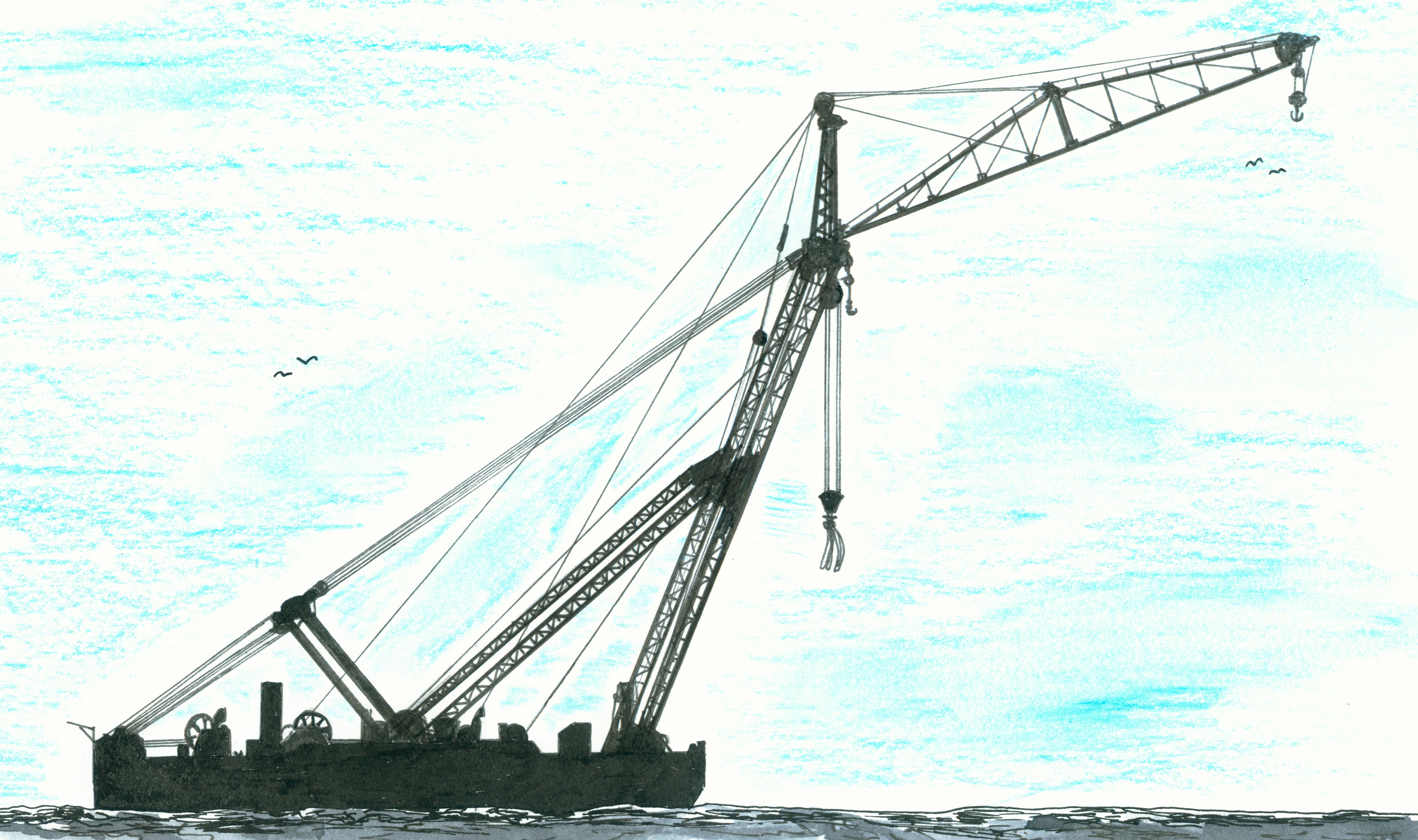An item reported that the day before in the afternoon at the shipyard IJsselwerf of Bijker’s Aannemingsbedrijf N.V. the Walcheren one of the largest floating cranes ever built in the
The archive of the shipyard De Schelde 1875-1970 (Gemeentearchief Flushing 214) inv.no. 557 supplies more details. Her building was ordered in January 1945 to be used for salvaging wrecks and lifting bridges. The dimensions of the pontoon were 35 x 15¾ x 3-3,5 (height) metres with a displacement of 1164,45 tons (full loaded). The main crane could lift to a height of 23 metres and had a maximum range of 18,5 metres . The top arm could lift to a height of 53 metres and had a maximum range of 35,3 metres . The pontoon was built by Bijkers at Gorinchem, the structure, winches and boiler were manufactured by the shipyard De Schelde.(1) On 19 April 1945 started what was called the depreciable work. On 8 December was the first transport with material sent to Bijkers and her keel was laid down in March a year later. On 30 September 1948 was she tested in the presence of a Polish commission interested in buying her. Due to an accident was she not sold.(2) She received in the meantime allready her Polish name Bartosz Between 29 October and 4 November 1949 was she investigated by a Soviet commission. At the shipway of the Firm Boele at Bolnes was she docked between 21 and 23 November 1949.
In inv.no. 655 are more details available dealing with the sale to the Soviet Union making clear that already in May between the yard and Machino-Import at Moscow USSR USSR 238’ . However she was not ready for delivery or transport. Finally the Dutch towing company L. Smit&Co’s Internationale Sleepdienst was contracted to tow her from Rotterdam towards Leningrad Kiel , Germany where she was to be replaced by the tug Ganges . On 31 December wrote the towing company that she was still off Helsinki Leningrad adviced in the meantime to go Tallinn Helsinki to Tallinn Poland
The newspaper Provinciale Zeeuwsche Courant dated 24 November 1949 reported the arrival of the Russian icebreaker Ilya Muhomets and the Russian tug Apollon at Rotterdam coming from Austria Russia Leningrad
Notes

